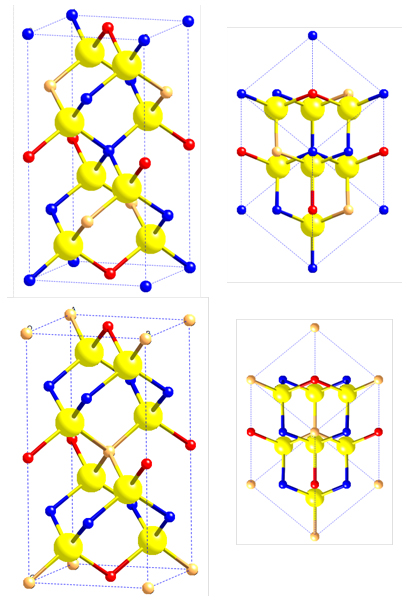Department Structure and Dynamics of Energy Materials
Cu-Zn anti-site defect in CZTS(Se)
CZTS and CZTSe crystallize in the tetragonal kesterite type structure [1, 2], which is characterized by alternating cation layers of CuSn, CuZn, CuSn, and CuZn at z=0, 1/2, 1/2, and 3/4 in the direction of the crystallographic c-axis. A differentiation between the isoelectronic cations Cu+ and Zn2+ is not possible using lab X-ray diffraction methods due to their nearly similar scattering power. But their neutron scattering lengths are different, thus neutron diffraction opens the possibility to answer the question of isoelectronic cation distribution [3].
We applied successfully neutron powder diffraction to determine the crystal structure of Cu2ZnSnS4 and Cu2ZnSnSe4 and to identify intrinsic point defects. The results of the neutron diffraction data analysis showed clearly that both compounds crystallizes in the kesterite type structure, disproving the stannite type structure. Thus both, CZTS and CZTSe, are kesterite type compounds. The identified intrinsic point defects are CuZn and ZnCu anti-sites, occuring in the CuZn (001) planes at z = ¼ and ¾. Moreover the defect concentration depends on the cooling rate during sample synthesis. The derived crystal structure and the cation disorder effect are in agreement with first-principles calculations.
S. Schorr: The crystal structure of kesterite type compounds: a neutron and X-ray diffraction study
Solar Energy Materials and Solar Cells 95 (2011) 1482-1488
S. Schorr, Ch. Stephan, R. Mainz, M. Tovar: Neutrons and photons in materials research for thin film solar cells
Advanced Engineering Materials 13 (5) (2011) 737-741
S. Schorr, H.-J. Höbler, M. Tovar: A neutron diffraction study of the stannite-kesterite solid solution series
European Journal of Mineralogy 19 (2007) 65 – 73

